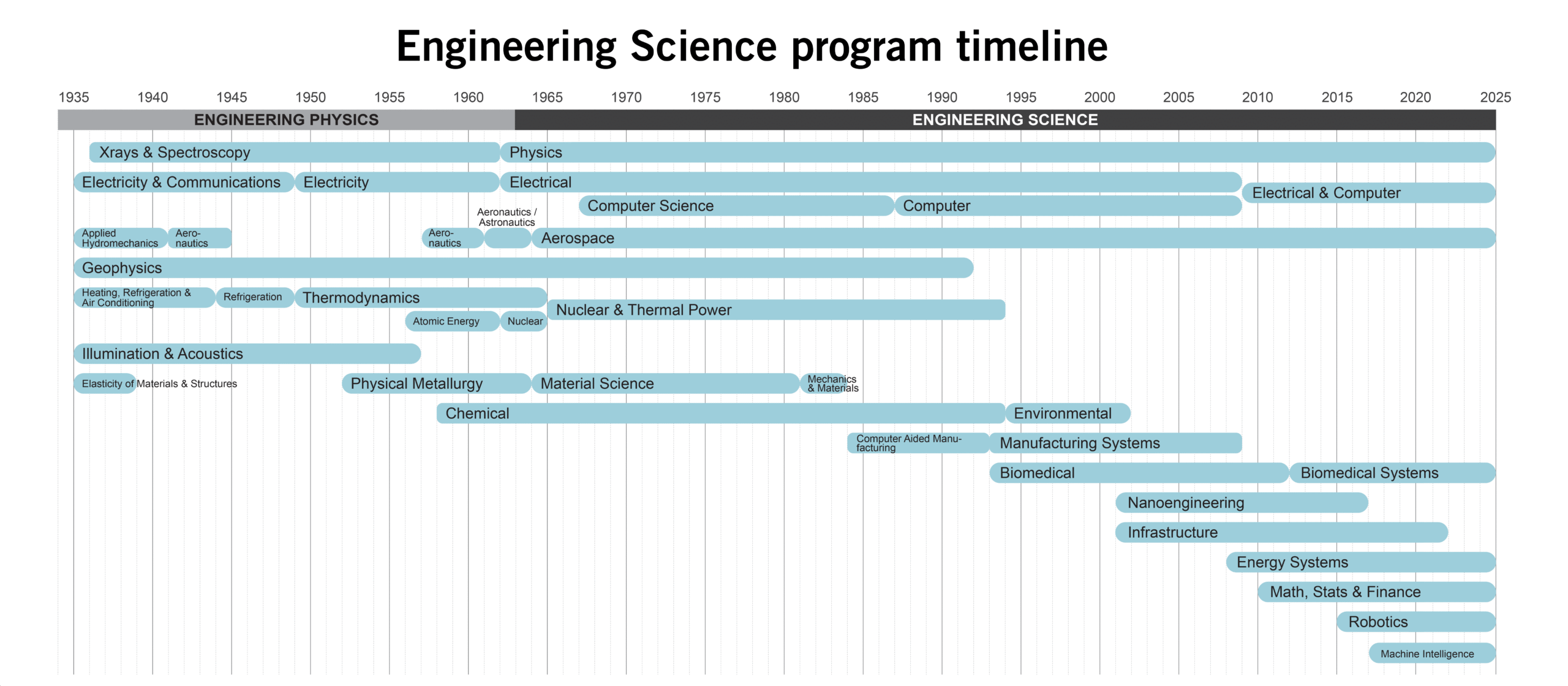
The EngSci program has two main founding principles which still exist today: a strong focus on physics, math, and science as the core of the program, and offering unique specializations after two years of fundamental courses. New majors were introduced throughout the years to respond to emerging fields of research and technology.
Early 1900s
The Engineering faculty focused primarily on preparing practical engineers and held the belief that the instruction of pure sciences should be separate.
A few physics professors came up with the idea of a new program that would combine mathematics, physics, and engineering. Thus, a new program called Engineering Physics was officially founded.
1934
1962
The Engineering Physics program was renamed Engineering Science (EngSci).

Long Standing EngSci Traditions
EngSci is not a department, but a division. This means that we draw instructors from across U of T Engineering and a few departments in the Faculty of Arts & Science, such as Math, Physics and Statistics. EngSci has four faculty members – Professors Asare, Carrick, Guerzhoy, and Hooper who teach exclusively teach EngSci courses.
Unique among U of T Engineering programs, EngSci has two foundational years where students learn math and science through the lenses of a variety of engineering disciplines, such as materials science, civil, computer, and so on. In their third and fourth years, they are offered unique majors often involving multidisciplinary skills.

We currently have over 6,000 living alumni all around the world in diverse and interesting fields. Click here to learn more. You can also read more about the history of Engineering Science.
